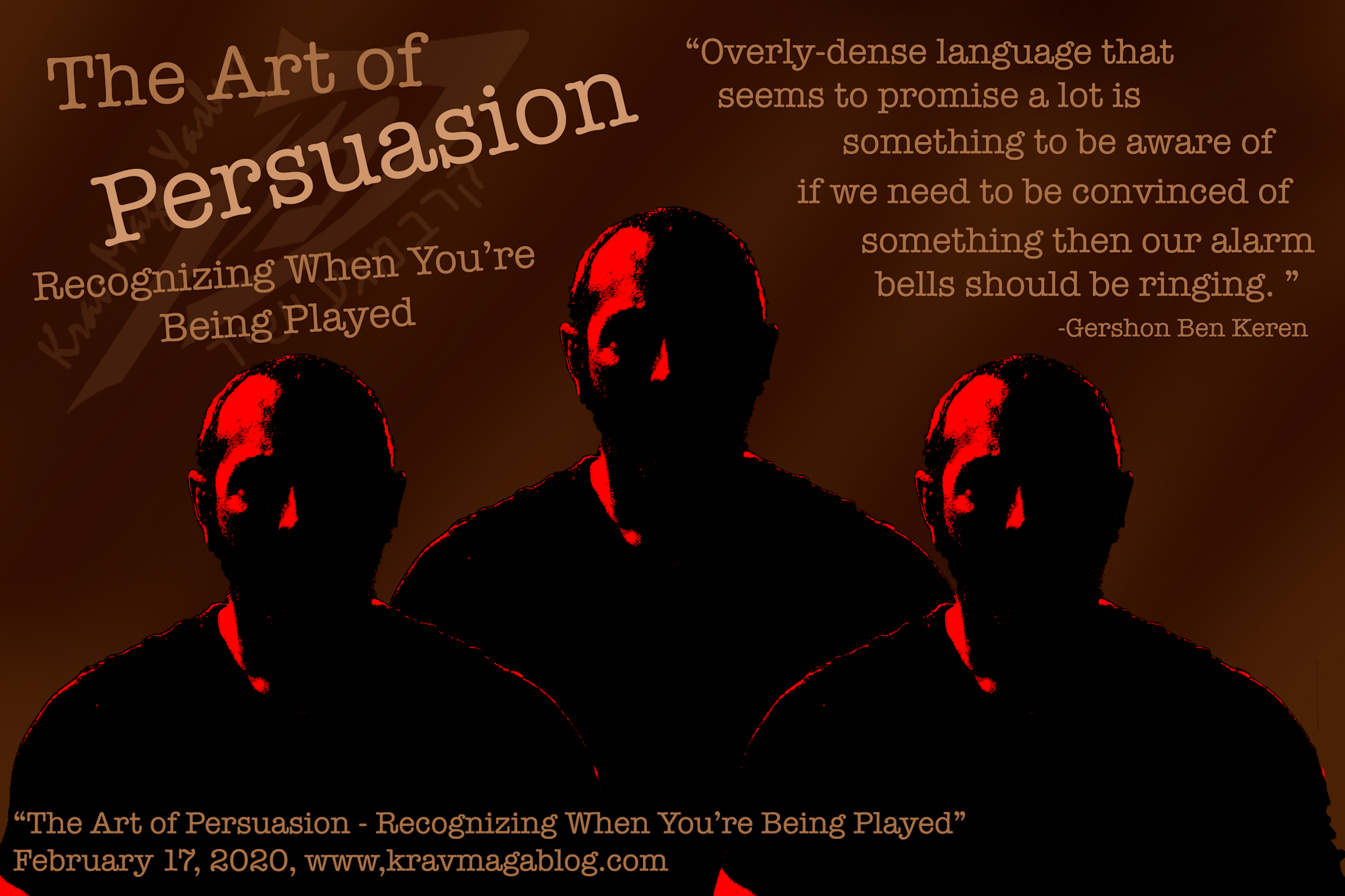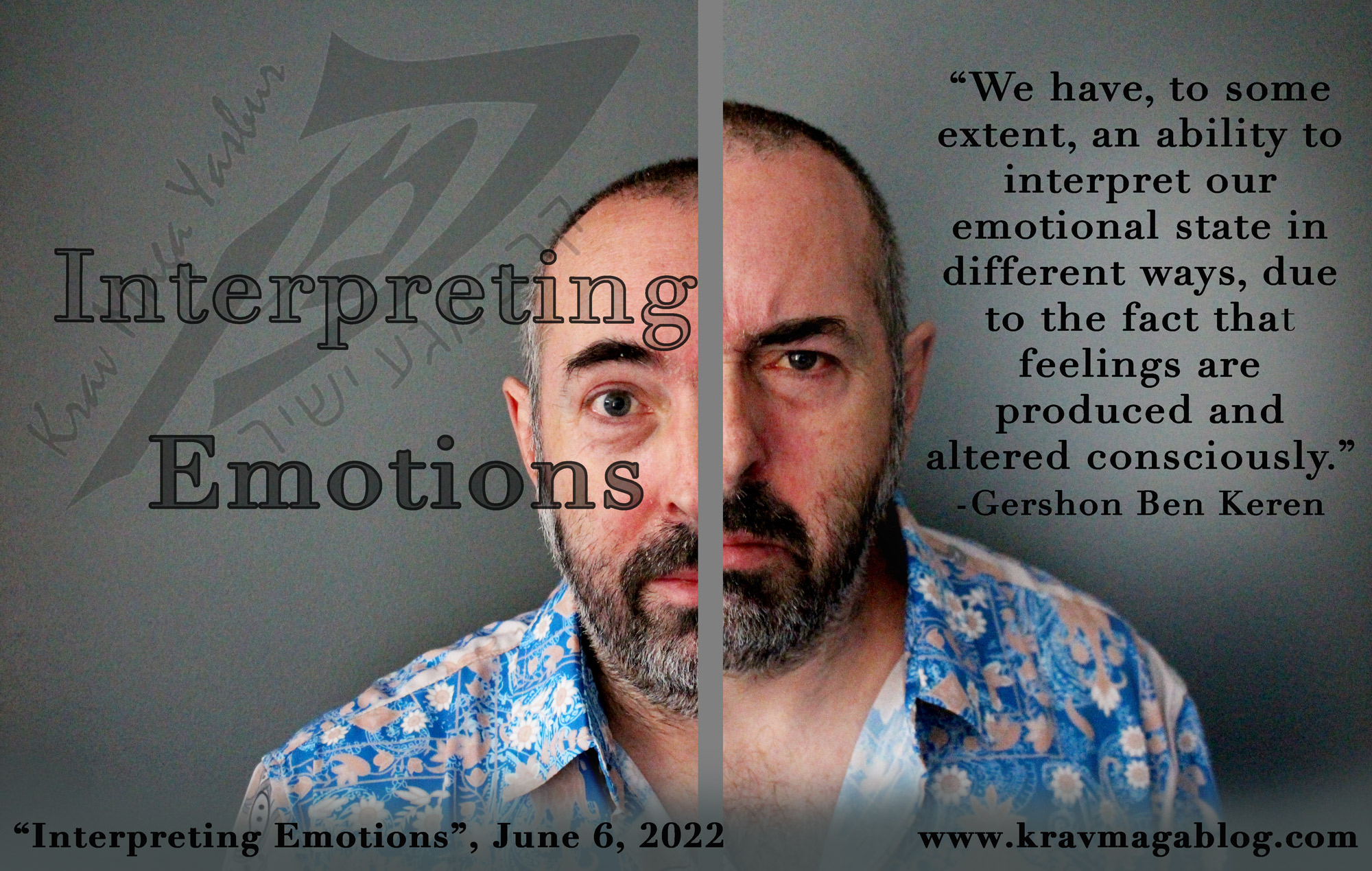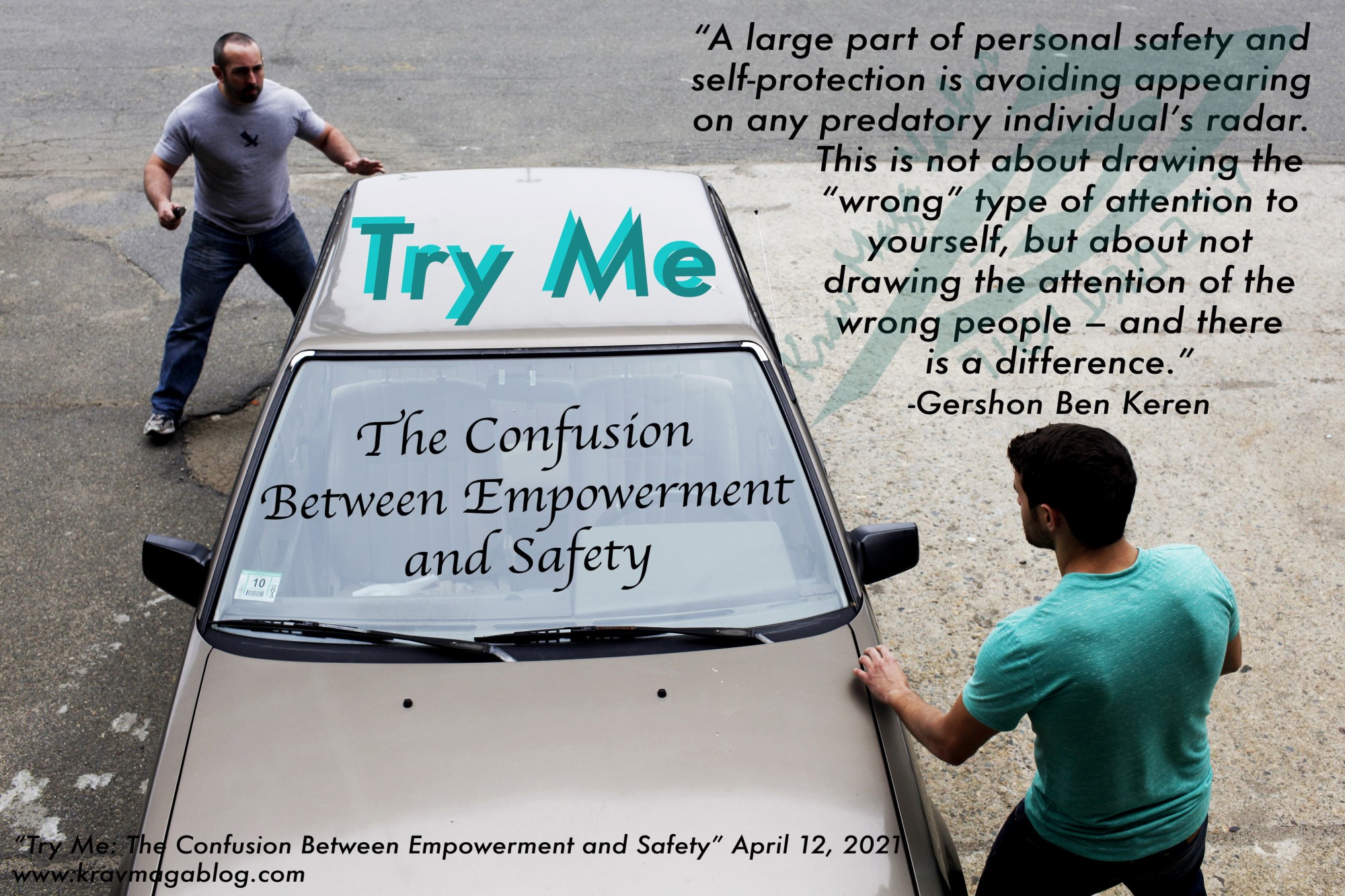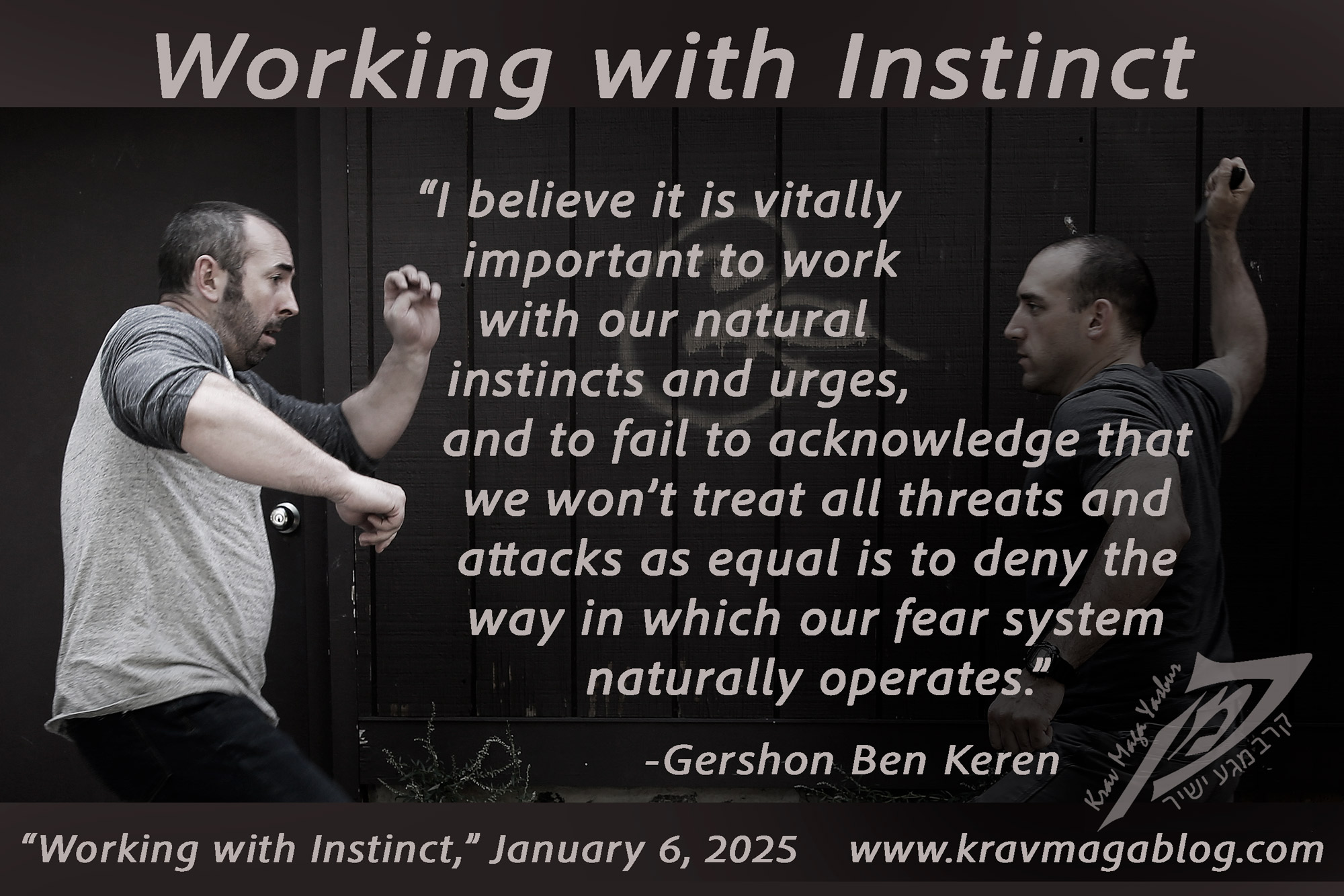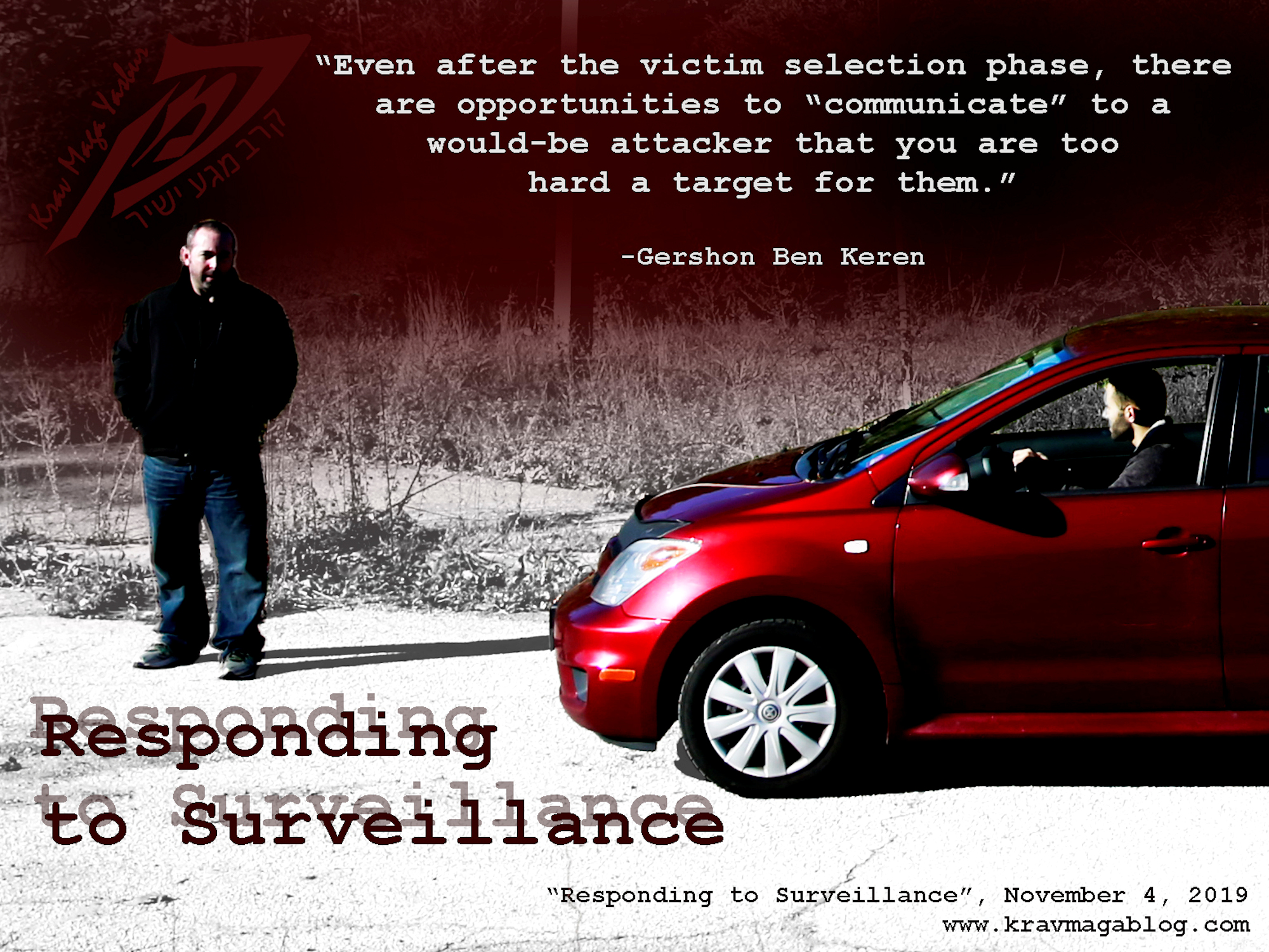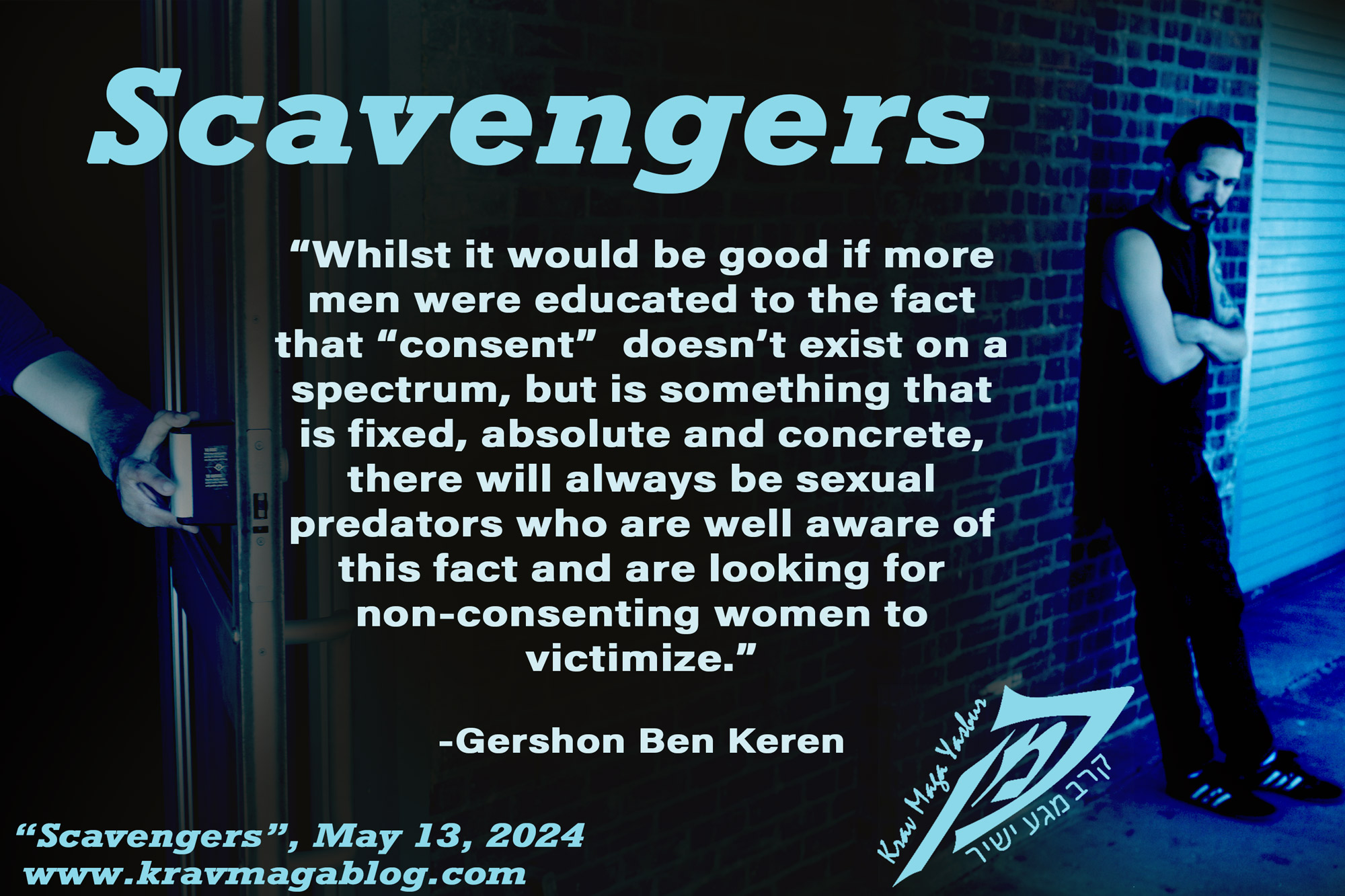Better To Be Tried By 12 Than Carried By 6, is an article written by Gershon Ben Keren, a 5th Degree Black Belt in Krav Maga, who teaches Krav Maga in Boston, MA. He has also authored three Amazon best-Selling Books on Krav Maga.
Glib phrases are not uncommon in the martial arts and self-defense. Some of these involve “absolute” statements, and proclamations, such as “high kicks don’t work on the street” or “95% of street-fights go the ground” etc. Neither one of these statements can be backed up, or statistics provided, to reinforce the argument. But it’s often easier and quicker to be glib, than to talk about the issues and problems with high kicks – whilst acknowledging that in some specific circumstances they may have their worth – or the importance of training to fight/survive on the ground, whilst at the same time acknowledging that most fights start from standing, etc. When I first started teaching, the internet didn’t exist, so these phrases and statements were restricted to in-person conversations, and articles in martial arts magazines, however with the proliferation of social-media, their usage has increased – and this is a shame because positive, productive conversations, discussions and debates could take place, instead of dismissive quips, and glib phrases. In this article, I want to look at some common phrases that are often used, and why it may be worth taking a look at when they may be relevant and when they add little, or detract from the debate.
“I’d rather be tried by 12 than carried by 6.” In the right context, there is nothing wrong with this statement. In a conflict where your life is at risk, there really is no such thing as excessive force, however in many incidents of social violence, this isn’t the case, and force has to be metered. It’s why I advise those who carry firearms, to carry pepper-spray as well; there is the need to have less than lethal options, as well as lethal ones – if you look at the tools on an LEO’s belt, there’s usually a baton, OC-Spray, and possibly a Taser, as well as a firearm. That doesn’t necessarily mean reducing intensity, as extent can also be reduced e.g. you can hit somebody with all the force you can muster, but this doesn’t necessarily mean that you should keep hitting them, when you have a clear and obvious opportunity to disengage, it doesn’t mean you should keep stomping on their head, whilst they are lying unconscious on the ground, “just to be sure”. Use of force, and how it should be applied, is part of reality-based self-defense training. The legal ramifications for what we do are important; you may not be found guilty of criminal charges where the burden of proof is extremely high, and reasonable doubt is at play, but if the person and/or their family bring a civil suit against you, where your guilt may rely on a 49/51 split, you could find yourself settling for tens of thousands of dollars – if being carried by 6 wasn’t really a possibility in the confrontation, you’ll regret being tried by 12 (they are rarely the only two options). Don’t get me wrong, I’m not underestimating the potential risks and dangers in a violent confrontation, and this is why I always stress disengagement, but we do need to have an understanding of appropriate use of force – and how to setup and control situations so that we don’t have to use excessive force. This may reduce the black and whiteness of violence, to having some grey areas, but that is part of the challenge of understanding and being able to identify different forms of aggression and violence.
“I’d have done X, Y or Z….” These comments are often found accompanying some CCTV (Closed Circuit TV) footage, of a real-life incident, such as a mugging or similar, and are used to criticize an individual’s actions and behaviors – even if they are successful, (and by successful, I mean coming out uninjured, alive, etc). If you’ve never faced a gun, or been attacked by a knife, you don’t know what you would do, and even if you have, no two situations are the same, so it is impossible to say with surety what you would do. It is also worth noting that in CCTV clips, you may not be privy to all the information that the person being targeted has e.g. you may not know the relationship that the target has with their assailant(s), you may not know what is happening outside of the frame, and you probably have no idea of the events that led up to the incident, etc. There is a very real danger in trying to deal with violent situations with fixed and prescribed plans of action; they may simply not be appropriate in a particular scenario – no two muggings are the same, even if the weapon is held in the same position, by an assailant of the same build, etc. If they are treated as the same, then the approach to self-defense is technique-centric, rather than situational – and this puts you at risk. There are times when it is effective to acquiesce to a predator’s demands and times where it is not, being able to discern when to do something and when to do something differently is a key survival skill.
When I first started teaching martial arts and self-defense – nearly 30 years ago – you’d commonly hear martial artists say, “yes, but that would never work on the street.” Over the years, this has changed to a more categorical, “that’s a good way to get yourself killed.” Don’t get me wrong, there are definitely some approaches that will get you killed, such as listening to the bang of a gun, and using that as a cue to step off-line; we don’t need to even debate that one, physics has the answer. However, when we move beyond the laws of physics (you’ll find it extremely difficult to throw somebody who is in an upright position – I won’t say you can’t, but it’ll take more effort than if you unbalance them first), everything comes down to context; when to do something, and when not to, and what options are available to you (and it’s never all the ones you had in your training environment). In one context, one thing may get you killed, in another it may be the only survival option available to you. I’ll sometimes hear self-defense instructors say you should never go to the ground – it’s a good rule of thumb, but it shouldn’t be an absolute one. If you are getting beaten unconscious by someone you know is superior at stand-up, and you have no disengagement option, maybe going to ground, and trying to control them there becomes your best survival option – or is going to ground a good way to get yourself killed, because they could pull a knife? Context is key, and if it is lost, we are reduced to being technique-centric players who can only operate in a vacuum or gym setting.
Of course, we can disagree with each other, and point out what we see as issues in an individual’s approach, etc., but the use of dismissive and glib comments does little to move a discussion forward or add to its content. Our experiences are useful, but so are our experiences, and we should respect those of others – even if they are different, and/or bring people to different conclusions. Rather than simply dismiss what we see with a comment of, “that would get you killed in the street” etc. if we want to add an opinion that moves the conversation forward, we should be prepared to take the time and effort to demonstrate the different ways we would solve a particular problem, and be ready to explain, and answer questions that may arise from this.
We’re all guilty of making glib and off-hand comments concerning self-defense and personal safety e.g. “personal safety is just common sense” – no it’s not, and this is why predatory individuals have the edge on us, because they know how our “common sense” tells us to act and behave etc. These phrases and statements give us a quick, short-hand way to express our opinions, however they don’t help us, or the people we direct them towards, or those who are listening, or give us anything to work with, and can even misguide e.g. someone who hears, “I’d rather be tried by 12 than carried by 6”, may be under the impression that they don’t need to consider use of force, which could be a very costly mistake, or if they take on board someone saying, “I’d have done X, Y or Z…” without any explanation of context, may try and replicate that solution, when it would be a bad idea to do so. In most cases, we need to leave the short-hand, and explain, the why’s, the what’s, and the when’s of violence.
0 COMMENTS